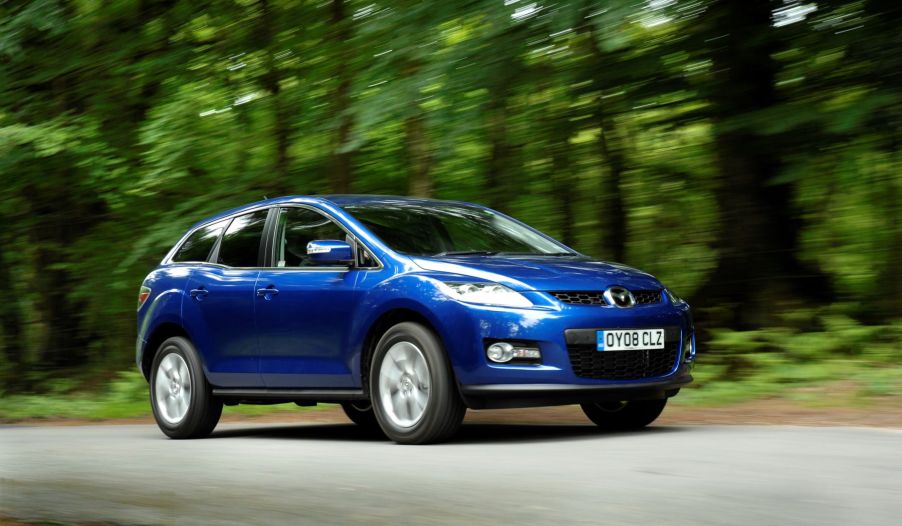
Mazda CX-50 vs. Mazda CX-7: SUV Successor and Predecessor Showdown
The Mazda CX-7 was a midsize SUV produced from 2006 to 2012. Technically, it was replaced by the Mazda CX-5. Nevertheless, while the CX-7 is a midsize SUV, the CX-5 is a compact crossover SUV, which makes the CX-7’s more likely successor the new 2023 CX-50.
Curious about how the CX-7 and CX-50 compare? Read on for the lowdown on these two Mazda SUVs.
A look at the engines on the Mazda CX-50 and CX-7

The new 2023 Mazda CX-50 is a relatively affordable SUV, with a starting retail price of $26,800, according to Edmunds. Just what do you get for that dough? To start, your baseline CX-50 comes with a six-speed shiftable automatic transmission and offers 187 hp along with 186 lb-ft of torque. Consumer Reports also notes that the new Mazda SUV can go from 0 to 60 mph in 9.3 seconds.
How does the older Mazda CX-7 stack up against these numbers? According to Edmunds, the 2012 CX-7 comes with a five-speed shiftable automatic transmission capable of 161 hp and 161 lb-ft of torque. Given that its engine comes with less power, it’s not surprising that it’s also somewhat slower than the CX-50, reaching 60 mph in 10.3 seconds.
Which SUV is best when it comes to fuel economy?
With fuel prices as high as they are these days, finding a vehicle that offers good fuel economy is a priority for many car buyers. That’s particularly true regarding SUVs, which often use more gas per mile than other types of vehicles.
The 2023 Mazda CX-50 offers decent mileage for an SUV. It gets an estimated 24 mpg in the city and 30 mpg on the highway, for a combined average of 27 mpg.
As an older model, the Mazda 2012 CX-7 doesn’t score quite well in this area. With the CX-7, you can expect to get around 20 mpg in the city and 27 mpg in the city, for a combined average of just 22 mpg.
Seating and cargo capacity on the Mazda CX-50 and CX-7
Since many people like to use their SUVs to haul cargo and equipment, cargo room is an important consideration for many consumers. So, the comparison, in this case, may surprise you.
That’s because the 2012 Mazda CX-7 offers 58.6 cu. ft. of cargo space with the rear seat folded. The CX-50, meanwhile, comes with 56.3 cu. ft. of cargo space with the seats removed (or 31.4 cu. ft. with the seats in place). So, this is one area where the older CX-7 comes out ahead of its newer counterpart.
Consumer Reports and Car and Driver have this to say about these two SUVs
Of course, while the 2023 Mazda CX-50 comes out ahead in many areas noted above, no vehicle is perfect. The CX-50 and the CX-7 have their positive and negative aspects, as Consumer Reports and U.S. News have clarified.
Consumer Reports gives the CX-50 high marks for handling, steering, fit and finish, and interior room. Where the publication finds that the SUV falls short, however, is in the smoothness of the ride, its acceleration power, and the ease of using the controls.
As for the Mazda CX-7, U.S. News gives it positive reviews for its stylish interior, comfortable seats, and strong turbocharged engine. Strikes against the vehicle, on the other hand, include cargo space and complicated audio controls.
All in all, these Mazda SUVs make for solid, if not overly exciting, options for anyone in the market for a midsize SUV. Though neither vehicle is perfect, they each have enough positive features to merit consideration.


